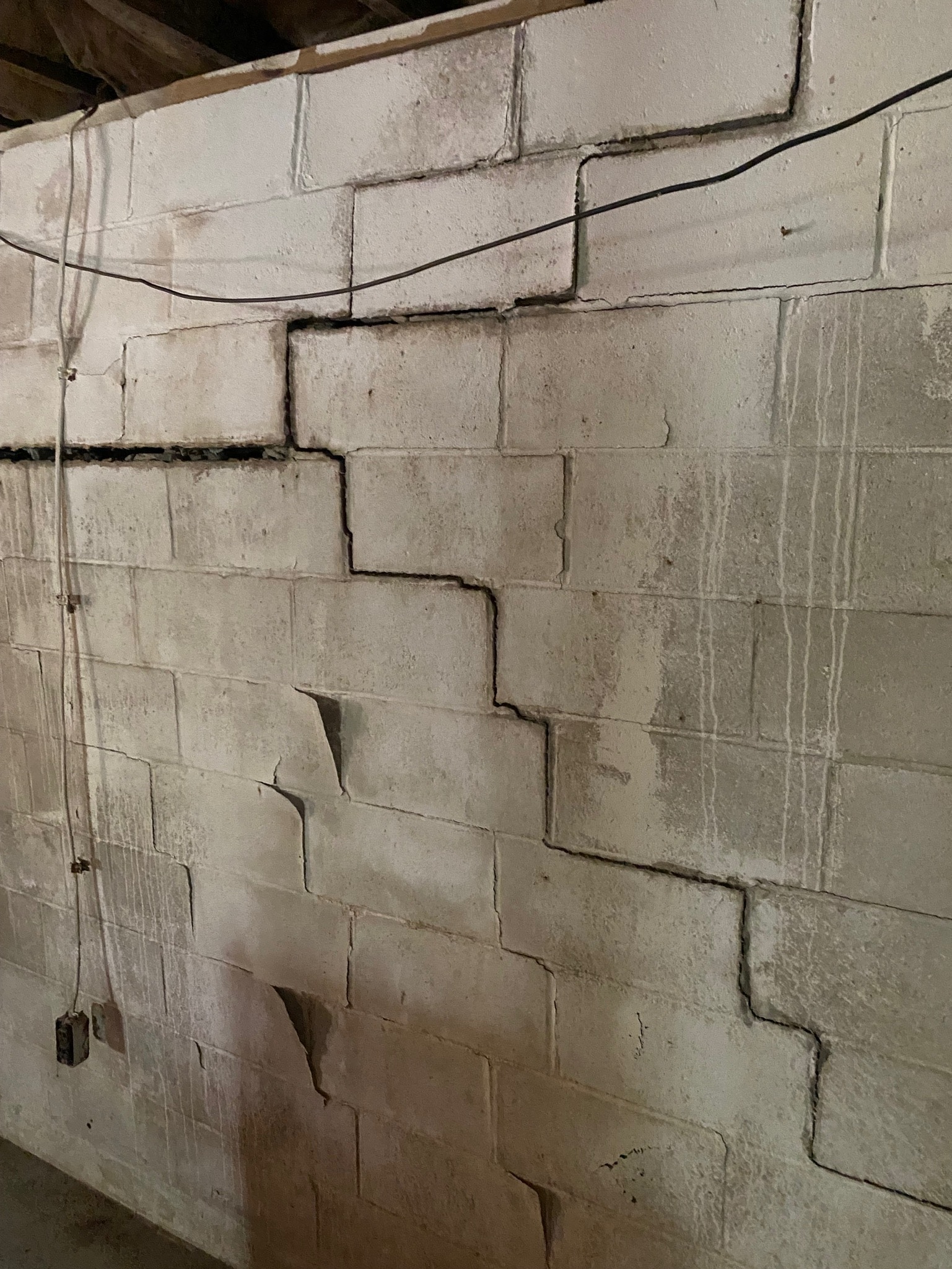
You’ve probably noticed cracks in your foundation and thought little of it, right? But did you know these seemingly harmless cracks can lead to serious mold growth in your home? When water finds its way through these cracks, it creates a perfect environment for mold to thrive. Not only does this cause unsightly discoloration and unpleasant musty odors, but it can also pose significant health risks to you and your family. So, how can you tackle this issue and what preventative measures can you take?
Key Takeaways
- Foundation cracks, caused by factors like soil shifting and poor construction, can allow water intrusion that promotes mold growth.
- Persistent dampness from water seeping through foundation cracks creates ideal conditions for mold to thrive.
- Cracks can worsen over time if not addressed, leading to more severe water intrusion and increased potential for mold growth.
- High indoor humidity levels, often seen with water intrusion through foundation cracks, can further promote mold growth.
- Professional mold remediation is necessary when foundation cracks have led to extensive mold growth, to ensure effective removal and prevent future issues.
Understanding Foundation Cracks
Almost every homeowner will encounter foundation cracks at some point. It’s a common issue that can throw your home’s foundation stability into question. But don’t panic just yet. Understanding what causes these cracks can help you address them effectively.
Cracks in your foundation may be due to factors such as soil shifting, temperature fluctuations, and poor construction. They can range from tiny hairline fractures to larger, more noticeable ones. Regardless of their size, it’s essential to take them seriously. Ignoring these fissures could lead to more serious complications down the line.
When you notice a crack, your first step should be to assess the damage. Is it superficial or does it go deeper? This assessment will guide your next steps. If you’re unsure, it’s best to consult with a professional.
Once you’ve assessed the damage, it’s time to evaluate crack repair. This might involve sealing smaller cracks or undertaking more significant repairs for larger ones.
The Connection Between Moisture and Mold
While you’re battling those foundation cracks, it’s important to be mindful of another potential issue that can arise – mold growth. The connection between moisture and mold is a crucial one to understand in this case.
Mold, you see, thrives in damp environments. It’s a fungus that can quickly spread when provided with the right conditions. One of these conditions is the presence of moisture. When there are moisture sources nearby, mold can latch on and start to grow.
This is why a damp basement or a leaky pipe can quickly become a breeding ground for mold.
But what does this have to do with foundation cracks? Well, these cracks can become channels for water to seep into your home. When water finds its way into your house, it creates damp environments where mold can flourish.
How Cracks Invite Moisture
You mightn’t realize it, but cracks in your foundation could be the welcome mat for unwanted moisture.
This intrusion isn’t a minor inconvenience; it’s a direct path for mold growth.
Let’s explore how such cracks can turn your home into a breeding ground for these unwelcome guests.
Moisture Intrusion Through Cracks
Cracks in your foundation might seem like a minor annoyance, but they’re actually invitations for moisture to enter your home. You mightn’t realize it, but even the smallest crack can provide a gateway for water to seep in, especially during heavy rain or floods.
Water intrusion through these cracks can lead to many problems, including structural damage and the growth of mold – which we’ll address later.
It’s important to pay attention to these cracks and take immediate action to prevent moisture intrusion. This is where crack repair comes into play. You can’t ignore it, thinking it’ll heal itself over time. It won’t. You need to repair those cracks to stop water from seeping in.
Another effective way to prevent moisture intrusion is by installing moisture barriers. They’re designed to keep water away from your foundation, hence reducing the chances of moisture seeping through the cracks.
So, even if you’ve got a few cracks, moisture barriers can help keep your home dry and safe.
In short, don’t underestimate the power of a small crack in your foundation. It’s more than just an eyesore; it’s a potential entry point for moisture, which can lead to bigger problems down the line.
Cracks Facilitating Mold Growth
Inviting moisture like an unwelcome guest, those seemingly insignificant foundation cracks can pave the way for mold growth. You might think those tiny fractures are harmless, but they’re not. Every crack is a potential invitation for water ingress, and where there’s water, mold isn’t far behind.
- Crack Inspection: Don’t underestimate the importance of regular crack inspection. You might find cracks you didn’t even know were there. If you spot any, take immediate action. Remember, it’s not just about aesthetics; it’s about preventing mold growth.
- Moisture Barriers: After addressing the cracks, consider installing moisture barriers. They’re a fantastic way to prevent moisture from seeping into your home. Picture them as impenetrable shields, preventing the onslaught of moisture.
- Preventative Measures: Finally, don’t neglect regular maintenance. It’s your best defense. Keep gutters clean, maintain proper drainage, and use dehumidifiers in damp areas.
In short, you’ve got to keep an eye on your foundation. Those cracks might seem small, but they can lead to big problems. By taking the right steps, you can prevent mold growth and maintain a healthier home.
Types of Mold in Homes
Over time, various types of mold can take hold in your home, especially in areas prone to moisture or dampness. You might think it’s merely an unsightly nuisance, but it’s critical to understand that these molds aren’t all the same. Certain mold types can be more harmful than others, even potentially leading to health issues.
Firstly, let’s discuss Cladosporium, a common indoor mold that you’ll often find on fabrics, wood, and damp areas. It’s usually a green or black color and can appear as a pepper-like substance.
Another prevalent type is Penicillium, often blue or green, thriving in areas with water damage like wallpapers, mattresses, or carpets.
You’ve likely heard of Aspergillus; it’s a mold type often found in household dust, which can produce toxins under the right conditions.
Health Risks Associated With Mold
Now let’s consider the health risks associated with mold.
You may not know this, but exposure to certain types of mold can trigger allergic reactions and even lead to chronic respiratory conditions.
It’s essential to understand these risks, particularly if you’re living in a home with foundation cracks that may harbor mold.
Mold-Induced Allergic Reactions
Breathing in mold spores from those hidden cracks in your foundation can trigger allergic reactions, making your home a health hazard.
These mold allergies are more than just a simple discomfort; they’re a real threat to your well-being. When you’re exposed to mold spores, your immune response kicks in, creating symptoms that can disrupt your daily life.
To help you visualize, here are three common mold allergy symptoms:
- Continuous Sneezing: This isn’t just a sneeze or two. It’s a relentless series that leaves your nose feeling sore and your eyes watering.
- Itchy, Red Eyes: Imagine constantly feeling like something’s in your eyes. They’re red, they itch, and they water. It’s almost as if you’ve been chopping onions all day.
- Skin Rashes: Think about wearing a wool sweater on a hot day – that’s how constant and uncomfortable the itching can be. Red, inflamed patches that beg to be scratched.
Don’t let mold allergies control your life. Remember, your health and comfort should always be your top priority.
Stay vigilant for signs of mold and crack formation in your home’s foundation. It’s the first step towards a healthier, happier living space.
Chronic Respiratory Conditions
Imagine a persistent cough that seems to linger, disrupting your sleep and causing discomfort throughout the day. This could be a sign of chronic bronchitis or other respiratory infections caused by exposure to mold. Mold, an indoor allergen, can greatly affect your lung health and trigger asthma attacks.
It’s not just you; millions are affected by poor air quality due to environmental factors like mold growth. Your immune response can be severely affected, leading to chronic respiratory conditions. The table below provides an overview of the common symptoms, causes, and preventive measures:
| Symptoms | Causes | Prevention |
|---|---|---|
| Persistent cough | Mold exposure | Maintain good air quality |
| Wheezing | Indoor allergens | Regular cleaning |
| Shortness of breath | Environmental factors | Proper ventilation |
| Chest tightness | Chronic bronchitis | Avoid damp environments |
| Fatigue | Respiratory infections | Use air purifiers |
Identifying Mold Growth in Your Home
Peeling wallpaper or a musty odor might be more than just an inconvenience; they could be signs of mold growth in your home.
Besides these, there are other tell-tale signs which you can’t afford to ignore. High indoor humidity can facilitate mold growth, and your first step in mold detection should be monitoring your home’s humidity levels.
When identifying mold growth, keep an eye out for the following:
- Discoloration or Staining: Mold can appear in various colors, like black, white, green, or brown. It can leave stains on walls, ceilings, or furniture.
- Visible Mold Spores: They may look like small specks or clusters on damp areas. Don’t mistake it for dirt or dust.
- Health Symptoms: Are you experiencing allergies, headaches, or respiratory issues? These could be related to mold exposure, especially if they worsen at home.
Prevention Strategies for Foundation Cracks
While mold growth is often a result of high indoor humidity, it can also be a consequence of water seeping through foundation cracks. To prevent such issues, you need to adopt proactive measures.
Start by addressing crack sealing. It’s an effective way to block water from entering your home. Regular inspections are essential too. They help you catch minor issues before they escalate. If you notice any cracks, don’t hesitate to call a foundation repair specialist.
Consider installing drainage systems. These can direct water away from your home, reducing the risk of seepage.
Soil grading is another worthwhile strategy. By ensuring the land around your house slopes away, you’ll further prevent water accumulation.
Waterproof barriers are a great way to boost your home’s resistance to moisture. This kind of barrier, combined with diligent moisture monitoring, can keep your indoor environment dry and mold-free.
Don’t overlook landscaping adjustments. Overgrown plants can trap moisture against your home, causing foundation damage over time.
Keep shrubs and trees pruned and at a safe distance from your foundation. With these preventative measures, you’ll greatly reduce the risk of mold growth due to foundation cracks.
Professional Remediation Techniques for Mold
Even in the most diligent of households, mold can sometimes take hold. This is especially true if your home is dealing with foundation cracks. When this happens, professional remediation techniques for mold become your saving grace.
Professional remediation starts with a thorough assessment of your situation. This means identifying the source of the mold, which could be related to the foundation cracks.
After the assessment, professionals will present you with a range of remediation options tailored to your specific needs.
Here’s a brief glimpse into the process:
- Containment: Professionals seal off the area to prevent the spread of mold spores during the remediation process.
- Removal: All mold-infected materials are safely removed and discarded.
- Cleaning and Sanitizing: The area is then thoroughly cleaned and sanitized to eliminate any remaining mold spores.
Frequently Asked Questions
What Is the Average Cost of Professional Mold Remediation Services?
You’re probably wondering about the cost of professional mold remediation services. On average, you’re looking at between $1,000 to $4,000.
However, it can go up to $6,000 or more, depending on the severity. To get a precise estimate, you’ll need a mold assessment first.
Experts will then use various remediation techniques to remove the mold. It’s not cheap, but it’s essential for your health and the integrity of your property.
Does Homeowners Insurance Typically Cover Foundation Crack Repair and Mold Remediation?
Typically, your homeowners insurance doesn’t cover foundation crack repair or mold remediation.
It’s often viewed as your responsibility to maintain your home and prevent such issues. However, if the damage is caused by a covered peril, you might’ve some insurance coverage.
It’s crucial to understand your policy and explore repair options. Always check with your insurance provider for specific details about what’s and isn’t covered.
How Long Does It Take for Mold to Grow After Moisture Intrusion?
Once moisture seeps in, mold can start growing in just 24 to 48 hours.
Remember, it’s essential to address moisture sources promptly for effective mold prevention.
Don’t wait until you spot mold or mildew. Act fast, fix leaks, and keep your space well-ventilated.
That way, you’ll reduce your chances of dealing with mold growth in your home.
Are There Any DIY Methods for Mold Removal That Are Safe and Effective?
Yes, you can use homemade solutions for mold removal.
White vinegar or baking soda mixed with water are common, effective solutions.
However, safety precautions are essential. Always wear protective gear, including gloves and a mask, to prevent exposure to harmful spores.
If the mold covers a large area or if you’re dealing with black mold, it’s best to hire a professional to guarantee safe, thorough removal.
Can Foundation Cracks and Subsequent Mold Growth Affect My Homes Resale Value?
Absolutely, foundation cracks and mold growth can negatively affect your home’s resale value.
When buyers see these issues, they often perceive a lack of maintenance and potential health risks. This impacts their willingness to pay top dollar.
Consequently, it’s essential to address these problems promptly. Don’t let cracks linger and invite mold to thrive.
Keeping your home in top shape guarantees a higher resale value and positive buyer perception.
Conclusion
So, you see, ignoring foundation cracks can invite unwanted moisture, fostering mold growth. This can lead to health risks and a musty home environment. By identifying mold early, fixing cracks promptly, and utilizing professional remediation techniques, you can nip the problem in the bud. Don’t wait for the issue to escalate, tackle it head-on and maintain a healthy, mold-free home. Remember, prevention is better than cure, especially when it comes to mold.

Seal-tite Basement Waterproofing Co. is a full service basement environment contractor. We carry an A+ Better Business Bureau rating. We repaired over 40,000 homes and structures in Virginia, West Virginia, Tennessee, and North Carolina. We are fully insured and licensed. We have worked in all types of locations, including residential and commercial locations, government agencies, colleges, hospitals, churches, and condo associations.
Seal-tite® offers a lifetime transferable warranty. We carry a Class A Contractor’s License and we are fully insured. Our satisfied customers range from government agencies to businesses, hospitals, colleges, churches, and thousands of homeowners. Your home is probably the single largest investment you will make in your lifetime. Don’t wait, call Seal-tite® to help make your home dry, safe and livable.

